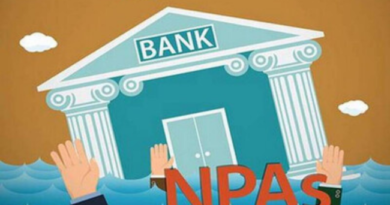Risk at the Top – Why Strategic Risk is the CEO’s Real Battlefield in 202
In the ever-accelerating race of the modern business world, change is no longer a background hum—it’s the entire soundtrack. Whether it’s the explosion of AI capabilities, the rise of new customer expectations, or global socio-political instability, today’s leaders are forced to navigate uncharted terrain. And while most businesses have operational risk protocols, financial cushions, and compliance strategies, few are prepared for the most dangerous threat of all—strategic risk.
Strategic risk doesn’t show up overnight. It brews under the surface—quietly distorting decision-making, undermining competitiveness, and blinding leadership to reality. And in 2025, where even a small misalignment can trigger exponential consequences, ignoring strategic risk is equivalent to betting your business on hope.
What Exactly Is Strategic Risk?
Strategic risk is the potential failure of a company’s big-picture strategy. It arises when external forces or internal blind spots challenge the long-term vision, mission, or relevance of the organization. Unlike compliance or financial risks—which are often measurable and easily reportable—strategic risk is ambiguous, dynamic, and deeply tied to leadership judgment.
Some examples of strategic risk in today’s context include:
- Technological disruption: A competitor adopts generative AI, while your company clings to outdated tools.
- Consumer trends: A brand that ignores eco-conscious buyers loses market share to sustainability-focused startups.
- Regulatory changes: New privacy laws in key regions alter how customer data can be used, affecting growth plans.
- Poor executive decisions: Leadership missteps—like ignoring whistleblower concerns or misreading market signals—lead to crises.
The danger with strategic risk is that by the time it’s visible on financial statements or performance dashboards, the damage is already done.
How It Has Crushed Industry Giants
History has no shortage of strategic risk failures:
- Kodak, despite inventing the digital camera, failed to embrace it. Strategic inertia and fear of cannibalizing its film business led to its downfall.
- Nokia, once the king of mobile phones, dismissed software innovation and failed to catch up with iOS and Android’s ecosystems.
- Blockbuster was offered a deal with Netflix but underestimated streaming. Its strategy was rooted in brick-and-mortar success—until it wasn’t.
- Boeing, in the race to compete with Airbus, prioritized speed over safety in its 737 MAX program. The result was catastrophic crashes and global reputational damage.
In all these cases, the issue wasn’t just operational failure—it was a failure of vision and strategy.
Why Strategic Risk Management Is Vital in 2025
What makes 2025 especially risky?
- Tech leaps are faster: With exponential growth in quantum computing, AI, and automation, entire industries can be upended in months.
- Global shocks are frequent: Pandemics, wars, and climate events now form the baseline of risk, not the exception.
- Consumers are empowered: Social media gives customers more voice and influence than ever before. A single viral story can destroy brand equity.
- Business cycles are shorter: Strategies that worked last year may already be outdated today.
In this high-speed, high-stakes environment, companies must adopt a strategic risk mindset—one that integrates uncertainty into planning, fosters innovation without recklessness, and turns disruption into competitive edge.
Strategic Risk ≠ Operational Risk
Here’s how strategic risk differs from traditional risk categories:
| Aspect | Strategic Risk | Operational/Financial Risk |
| Time Horizon | Long-term | Short-to-mid term |
| Visibility | Often unclear until it’s too late | Regularly monitored |
| Measurement | Qualitative, judgment-based | Quantitative, metrics-driven |
| Impact | Business model failure | Operational disruption or financial loss |
| Control | Requires top leadership alignment | Can often be delegated to functions |
This is why boards and CXOs must be directly involved in strategic risk discussions. It cannot be outsourced to middle management or external consultants.
A Framework for Managing Strategic Risk
So how can organizations tame this elusive beast?
Here’s a simplified approach:
1. Scan the Horizon: Use tools like PESTLE and scenario analysis to understand macro forces that might affect your business.
2. Challenge Assumptions: Regularly revisit core beliefs behind your strategy. Are they still valid? Or are they outdated mental models?
3. Develop a Risk Appetite Statement: Define how much risk your organization is willing to take. This provides a compass for decision-making.
4. Use Strategic Risk Mapping: Identify risk drivers, their probability, and potential impact on your strategic objectives.
5. Embed Risk Culture: Make strategic risk awareness part of leadership training, decision reviews, and communication channels.
Everyone Has a Stake in Strategic Risk
This isn’t just a big corporation problem.
- Startups need to balance agility with direction.
- NGOs and educational institutions must assess whether they’re still delivering relevant value in changing societies.
- Governments and policy bodies must re-align strategies with new economic, technological, and environmental realities.
Strategic risk is relevant whenever long-term impact meets limited resources.
Learn to Lead Through Uncertainty
To help professionals take control of strategic risk, we offer a powerful 2.5-hour self-paced course designed for modern leaders.
What you’ll learn:
- Fundamentals of strategic risk
- Case studies: Boeing, Netflix, Kodak, Nokia
- Tools like SWOT, heatmaps, and PESTLE
- Building a risk-aware leadership culture
- Aligning business goals with risk appetite
Whether you’re a manager, entrepreneur, or policy strategist, this course will sharpen your foresight and future-proof your planning.




